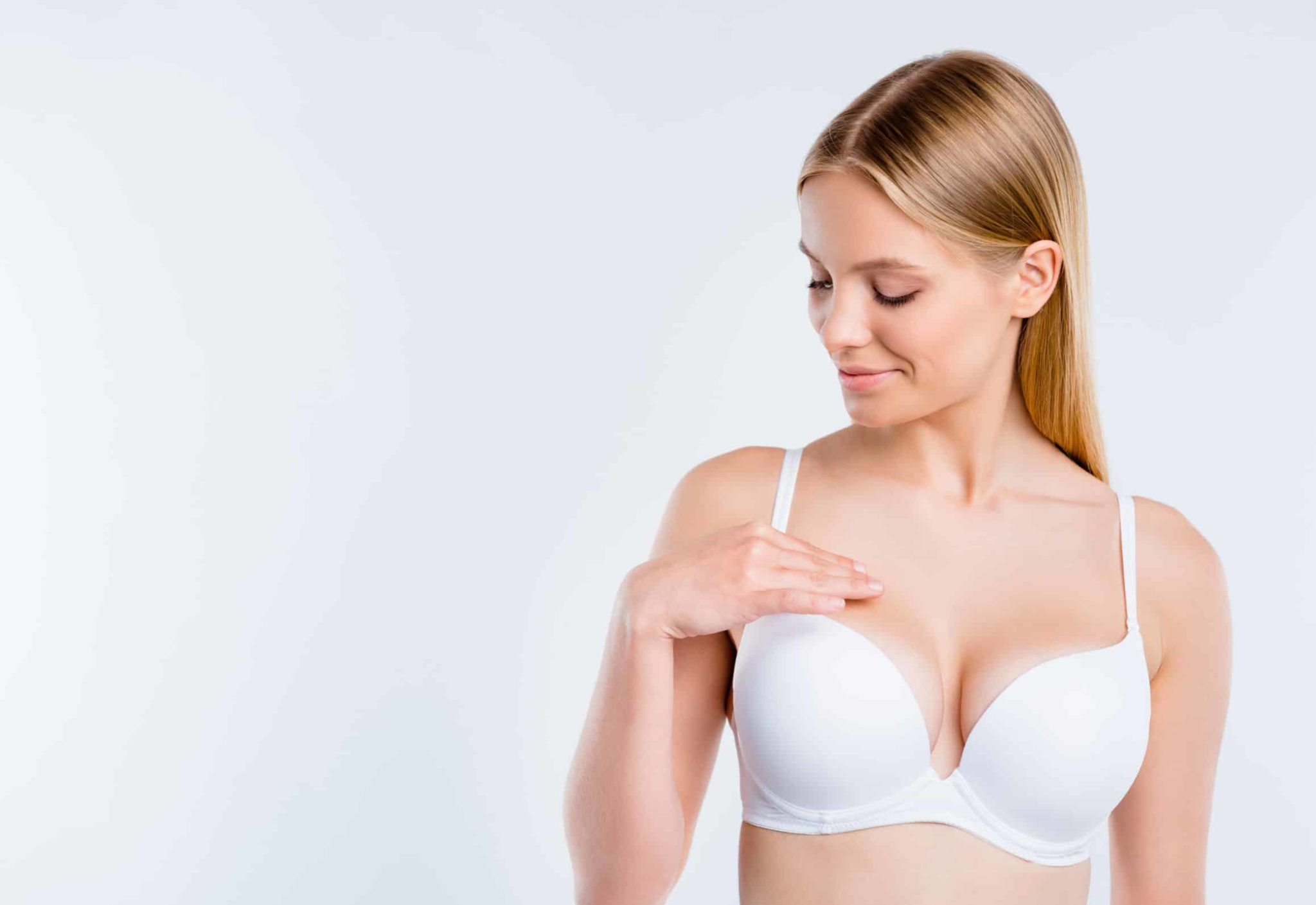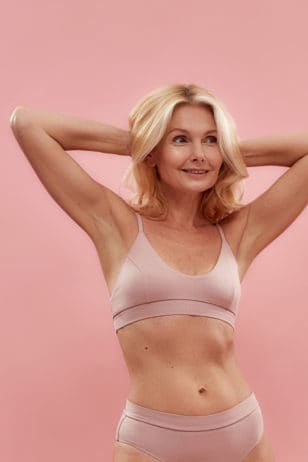Causes | Treatments | Key Takeaways | FAQs
Medically Reviewed April 2023, by Claire Clarke - Head of Surgical Services for The Harley Medical Group
What is considered sagging breasts?
Sagging breasts or ‘breast ptosis’ is usually nothing more than a harmless, aesthetic feature. Breast ptosis often refers to lower appearing nipples, or those that point downwards and it can range from mild to severe.
Sometimes, however, it can cause serious back and neck pain, as well as poor posture in even young girls with large, heavy breasts.
There are a range of factors which can lead to saggy breasts, including age, pregnancy, genetics and weight fluctuations.
Breast surgery can improve the appearance of saggy breasts, however, other non-invasive measures such as exercise may also prove to be helpful.
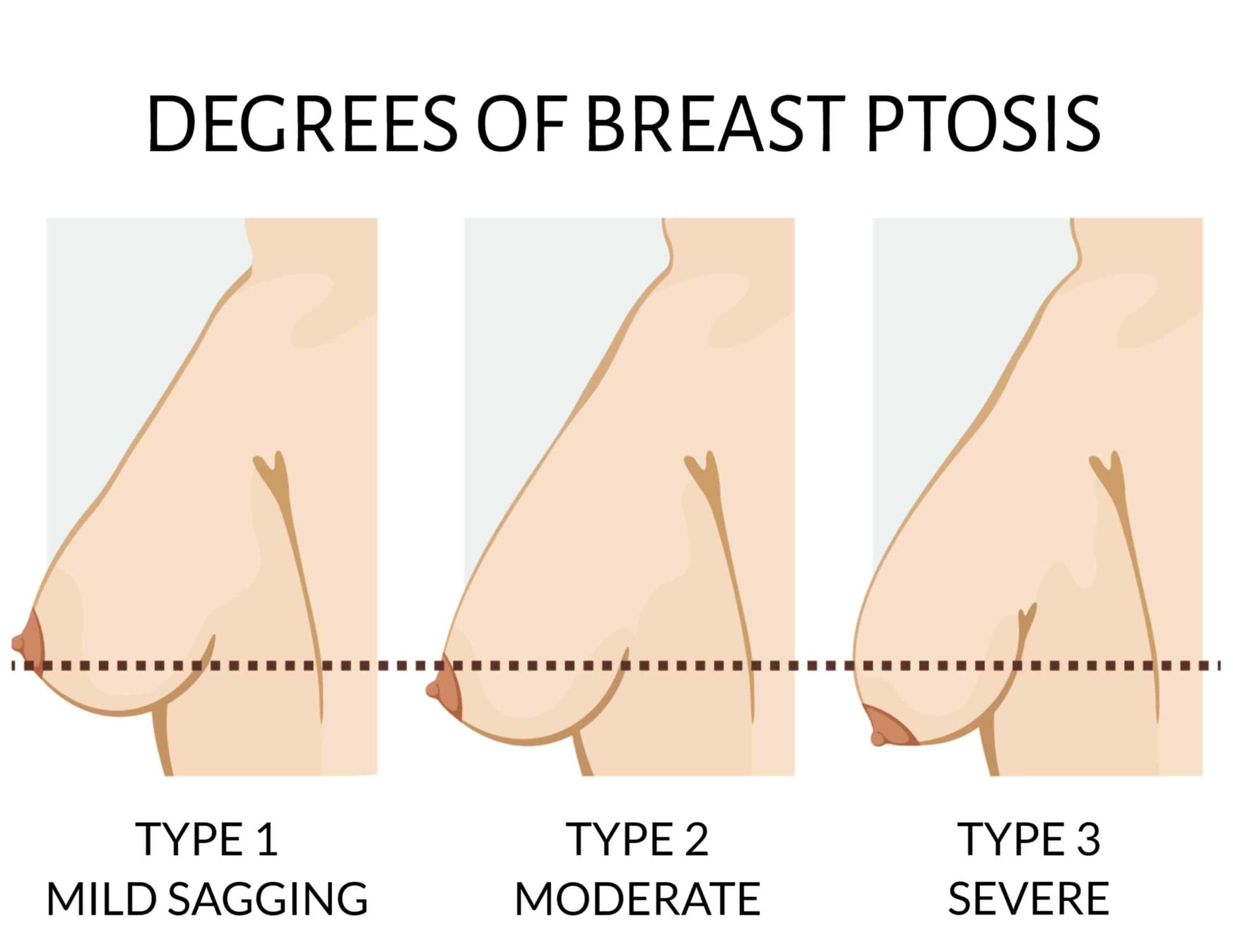
What causes saggy breasts?
- Age
It’s inevitable that since ageing causes a reduction in collagen and skin elasticity, it causes sagging, which becomes particularly obvious in the breast area.
- Gravity
Gravity is continually pulling down on the breast tissue, causing the ligaments holding the breasts to stretch and lead to sagging.
- Genetics
The size and shape of breasts are largely determined by genetics. In general, long, narrow breasts and larger chested women are believed to experience the most sagging.
- Hormone changes through menopause or illness
When menopause causes oestrogen levels to drop, the mammary glands shrink and the connective tissue in the breast becomes dehydrated and loses elasticity. These changes can cause the breasts to appear smaller and to sag.
- Multiple pregnancies
Pregnancy, particularly more than one, will often result in sagging breasts, regardless of how a woman chooses to feed her baby. This is usually the result of rapid weight gain and loss, causing the skin to stretch out and not return to pre-pregnancy levels.
- Rapid weaning after breastfeeding
Some women’s breasts increase by several cup sizes when breastfeeding and when they stop, the breast tissue responsible for milk production will bounce back, or ‘involute’. It takes most women around six months for their breasts to return to their pre-pregnancy ‘full’ shape. Sometimes, however, breasts stay ‘deflated’ looking.
- Weight gain/loss
Excess weight around the breast causes strain on the tissue and ligaments, leading to sagginess. And losing weight quickly causes excess skin which can also sag. It’s always recommended to reduce weight slowly by eating a healthy diet filled with a variety of fresh food, as well as exercising. This will help the skin to adjust accordingly.
- Not wearing a supportive bra
A good supportive bra will hold the weight of your breasts and reduce the load on your ligaments, no matter what size your chest is. This will help to reduce your risk of premature sagging and is particularly important during exercise which places extra strain on ligaments.
- Diseases
Unsurprisingly, the trauma of disease to the breast (for example breast cancer or breast tuberculosis) can cause sagging.
- Sun exposure and tanning beds
Lengthy exposure to ultraviolet rays from both the sun and tanning beds affects skin’s elasticity, weakening it by drying it out and breaking down collagen - making it more prone to sagging. This is why covering up and using sunscreen is so important in hot weather.
- Smoking
Smoking dries out your skin and causes it to lose elasticity. This can cause sagginess.
- Breast surgery
Breast surgery is invasive, whether it’s medical or cosmetic. As a result, it can affect the mass and structure of the breast and breast tissue. How much resulting sagging will occur depends on what was removed or added during surgery.

How to fix sagging breasts
While there are many simple ways to try to reduce potential breast sagging, once the damage is done it is difficult to rectify naturally.
Swimming (in particular breaststroke) and targeted exercise are believed to be able to help tighten chest muscles and improve posture to reduce this ‘saggy breast’ appearance. In some cases, however, sagging can be too severe for this to help.
If a woman isn’t able to improve the appearance of her bust after months of exercise, she may wish to investigate surgical options if sagging is causing neck or back pain, posture problems, or is affecting her mental health.
The Harley Medical Group offers a range of solutions, performed by highly qualified surgeons and using the latest technology.
Some women opt to reshape their natural breasts, as opposed to having implants. This is called a ‘mastopexy' or breast uplift, and is usually favoured by ladies with a larger chest that may be looking for ‘saggy breasts after breastfeeding’ solutions.
A breast lift focuses primarily on breast position, not increasing the size of the breast. It involves repositioning the nipple higher on the chest wall and the removal of any excess skin, as well as tightening the breast tissue to create a ‘perkier’ looking breast that doesn’t droop or sag anymore.
Breast enlargement is a surgical option for women who want to increase their chest size. For this procedure, patients choose between round or teardrop-shaped implants from a wide variety of sizes in our MENTOR range.
These silicone implants are then inserted under a general anaesthetic, with surgery taking between one and two hours to complete.
At The Harley Medical Group, we use the Keller Funnel™ to introduce the implant, rather than the traditional method of the surgeon using their gloved fingers. This provides a less traumatic insertion method and means a shorter incision.
Patients usually make a full recovery between four and six weeks after surgery.
Combining our popular breast lift with an increase in size through implants, this option offers significant results, particularly for those with smaller breasts.
Whether it’s referred to as a 'breast uplift with implants', a 'breast lift/enlargement, or the medical term 'augmented mastopexy', this procedure provides the most dramatic results— by not only removing any excess skin, but also filling out deflating looking breasts with an implant of the patient’s choice.
Speak to a patient advisor
Key takeaways
Many factors can contribute to sagging breasts, including
- Age
- Gravity
- Hormone changes
- Breast surgery
- Pregnancy/breastfeeding
- Weight gain/loss
- Smoking
- Sun exposure
- Not wearing a supportive bra
Ways to reduce the chance of sagging include:
- Maintaining a healthy, steady weight through a healthy diet and targeted exercise
- Avoiding smoking
- Avoiding overexposure to sun/tanning beds
- A well-fitting, supportive bra
For women who feel that a droopy bust is affecting their physical or mental health, surgery may be an option.
Always consult your doctor about any changes to the shape, size, or colour of the breast— as well as any lumps, pain, redness, swelling, warmth, itchiness, or discharge
Related Conditions
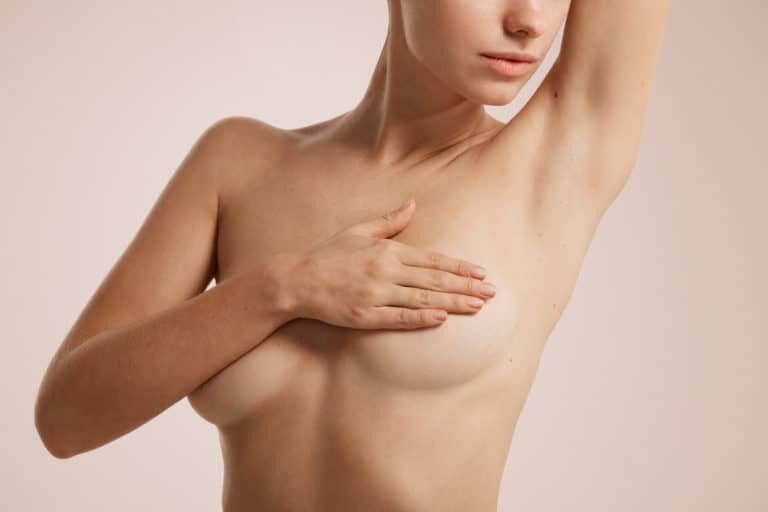
Breast asymmetry
Breast asymmetry (also known as uneven breasts) occurs when a woman has one breast that is a different size, position or volume to the other. It is a very common condition that affects more than half of all women. There are three types of breast asymmetry...
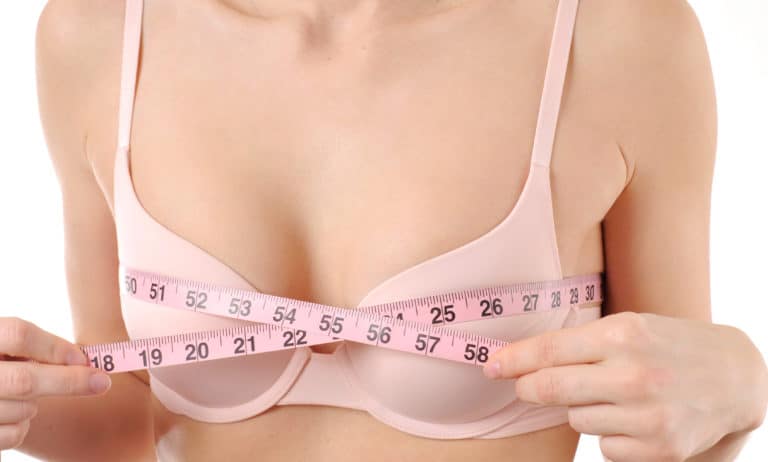
Small breasts
Usually, when a woman considers that she has small breasts, she often means that she feels they are small for her frame. However, in rare cases, small breast size isn't just an aesthetic matter. Sometimes, breasts fail to develop properly for medical reasons...
